While tens of millions of Americans invest with Fidelity, you don’t necessarily need a Fidelity account to yoke your retirement portfolio to this famed investment titan.
All you need are a handful of Fidelity’s best mutual funds, which for more than seven decades have built a reputation on sterling human management and, in more recent years, some smart, cost-efficient index products too.
One of the only real problems with Fidelity’s fund lineup is its size. At more than 200 products, you could get lost in the weeds for days trying to sort out which of its mutual funds stand out from the rest. The job is made all the more difficult when you realize Fidelity has numerous share classes, making it even more difficult to determine which funds you can actually access.
Today, I’m going to make it simple. Read along with me as I cover some of Fidelity’s best mutual funds to buy in 2025—a collection of products that showcase both Fidelity’s track record as a haven for smart stock and bond pickers, as well as its ability to provide superior index funds with thin fees. Importantly: All of the Fidelity funds on this list are Investor-class shares available to average Joes and Janes, and with no investment minimums to boot.
Disclaimer: This article does not constitute individualized investment advice. These securities appear for your consideration and not as personalized investment recommendations. Act at your own discretion.
Featured Financial Products
Why Fidelity Mutual Funds?
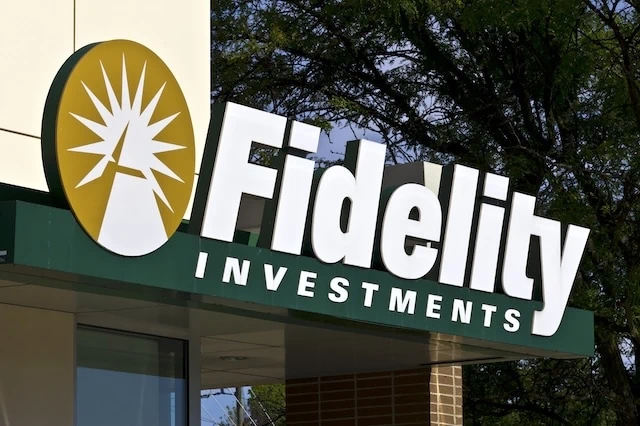
Fidelity is a leader in mutual funds (and ETFs, for that matter) and has been a force in the industry since the launch of its Fidelity Puritan Fund (FPURX) back in 1947.
Today, this premier mutual fund company has $15 trillion in assets under administration thanks in large part to the success of its talented fund managers. Most notably, that includes Peter Lynch, the longtime manager of the Fidelity Magellan Fund (FMAGX) who averaged an incredible 29.2% per year between 1977 and 1990.
However, while Fidelity first built its name on actively managed funds, over the past three decades, the firm has built out its low-cost and even no-cost index funds as part of the movement to reduce expense ratios and transaction costs for individual investors.
The end result is a fund lineup that can serve just about every need, and that’s typically competitive on price.
How Were the Best Fidelity Mutual Funds Selected?

Fidelity offers up quite the collection of mutual funds—in the hundreds, in fact, making it easy to succumb to analysis paralysis.
To whittle my way down to a more manageable list of the truly best Fidelity mutual funds, I’ve started with a quality screen, including only Fidelity mutual funds that have earned a Gold Morningstar Medalist rating.
Unlike Morningstar’s Star ratings, which are based upon past performance, Morningstar Medalist ratings are a forward-looking analytical view of a fund. Per Morningstar:
“For actively managed funds, the top three ratings of Gold, Silver, and Bronze all indicate that our analysts expect the rated investment vehicle to produce positive alpha relative to its Morningstar Category index over the long term, meaning a period of at least five years. For passive strategies, the same ratings indicate that we expect the fund to deliver alpha relative to its Morningstar Category index that is above the lesser of the category median or zero over the long term.”
As I’ve written in other Young and the Invested articles, a Medalist rating doesn’t mean Morningstar is necessarily bullish on the underlying asset class or categorization. It’s merely an expression of confidence in the fund compared to its peers.
Fidelity actually has dozens of Gold-rated funds, but several of them are specific share classes that are only available to certain subsets of investors—those enrolled in Fidelity Wealth Services, for instance, or those enrolled in eligible employer-sponsored retirement plans. So I’ve further narrowed the list to only Investor-class funds. Importantly, these funds typically offer no investment minimums, meaning you can get started for as little as one dollar.
From the remaining universe of funds, I selected a range of both indexed and actively managed mutual funds displaying the best Fidelity has to offer. This list includes both core portfolio holdings, as well as satellite products you can use to try to generate alpha.
The Best Fidelity Mutual Funds to Buy

As mentioned before, Fidelity boasts some of the fund industry’s top managers. So while this list of Fidelity’s best mutual funds includes a few dirt-cheap index funds, I’ve highlighted several actively managed products—both core and satellite holdings alike—that demonstrate the firm’s ability to identify the market’s best opportunities.
Also, every fund highlighted on this list boasts annual expenses that are at least below their category average. So while Fidelity’s actively managed funds might be more expensive than your average index fund, you’re still getting good relative value. (That said, if you have access to more inexpensive share classes via your wealth manager, retirement plan, or elsewhere, use those instead!)
One last reminder: Each fund on this list has no investment minimums. So you can get started with as little or as much capital as you’d like.
1. Fidelity 500 Index Fund
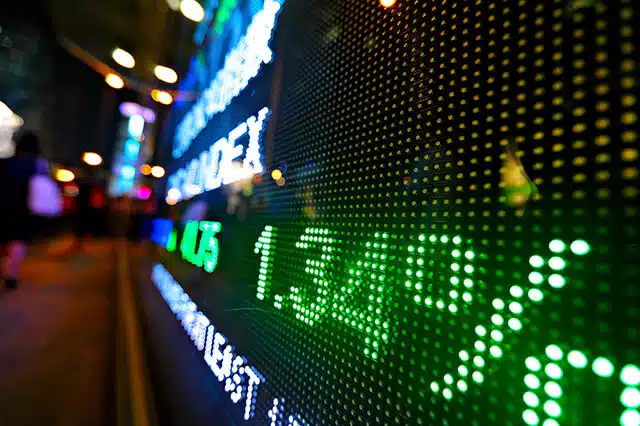
- Style: U.S. large-cap stock
- Management: Index
- Assets under management: $594.0 billion
- Dividend yield: 1.3%
- Expense ratio: 0.015%, or 15¢ per year for every $1,000 invested
If a major mutual fund provider’s lineup includes a cheap S&P 500 index fund, chances are it’ll be one of their best-rated funds, and that’s the case here with Fidelity 500 Index Fund (FXAIX).
The logic goes like this: The S&P 500 Index is commonly used as a performance benchmark for mutual funds that invest in U.S.-based large-cap stocks. But the majority of fund managers who run these funds typically struggle to beat their benchmark. Indeed, according to S&P Dow Jones Indices, in 2024, “65% of all active large-cap U.S. equity funds underperformed the S&P 500, worse than the 60% rate observed in 2023 and slightly above the 64% average annual rate reported over the 24-year history of our SPIVA Scorecards.”
As I’ve long said about S&P 500 funds: If you can’t beat it, join it.
The Fidelity 500 Index Fund tracks the S&P 500—a collection of some of the largest American companies, but to clarify, not the 500 largest American companies. To be included in this index, a company must have a market capitalization of at least $20.5 billion (up from $18 billion after a 2025 rule change), its shares must be highly liquid (shares are frequently bought and sold), and at least 50% of its outstanding shares must be available for public trading, among other criteria. A company must also have positive earnings in the most recent quarter, and the sum of its previous four quarters must be positive—two traits that weed out at least a few massive firms that would otherwise be included.
Note: Once a company becomes an S&P 500 component, it’s not automatically kicked out if it fails to meet all of the criteria. However, the selection committee would take this under consideration and possibly boot the company.
People like to consider the S&P 500 a reflection of the U.S. economy. But it’s hardly a perfect representation. For instance, the technology sector accounts for almost a third of FXAIX’s assets. Real estate, materials, and utilities merit less than 3% apiece. This is in no small part because, like many indexes, the S&P 500 is market capitalization-weighted, which means the greater the size of the company, the more “weight” it’s given in the index. Currently, trillion-dollar-plus companies Apple (AAPL), Microsoft (MSFT), and Nvidia (NVDA) sit atop Fidelity 500 Index Fund’s holdings list.
Turnover, which is how much the fund tends to buy and sell holdings, is always low, given that only a handful of stocks enter or leave the index in any given year. This tamps down (and often eliminates) capital-gains distributions, which receive unfavorable tax treatment. This makes FXAIX an extremely tax-efficient option for taxable brokerage accounts.
It’s this combination of traits—the S&P 500’s excellence as an index, bare-bones costs, and tax efficiency—that earn this Fidelity index fund a Gold Medalist rating from Morningstar. That makes FXAIX one of the best Fidelity mutual funds to buy, especially if you’re building the core of your portfolio.
Want to learn more about FXAIX? Check out the Fidelity provider site.
2. Fidelity Focused Stock Fund

- Style: U.S. large-cap growth stock
- Management: Active
- Assets under management: $3.7 billion
- Dividend yield: 0.4%
- Expense ratio: 0.61%, or $6.10 per year for every $1,000 invested
If you did want to try to beat the index, Fidelity Focused Stock Fund (FTQGX) has historically been up for the job.
Fidelity Focused Stock Fund is an actively managed large-cap growth fund, helmed since 2007 by Stephen DuFour. S&P 500 funds (like FXAIX) are considered large-cap “blend” funds because they hold both growth stocks and value stocks. But FTQGX explicitly wants to hold companies with elements of both. Specifically, DuFour says he seeks out firms that “will grow earnings materially faster than the market and are still trading at attractive valuations.” (This strategy is typically referred to as “growth at a reasonable price,” or GARP.)
Fidelity Focused Stock Fund is benchmarked against the S&P 500, which in active-fund parlance means DuFour’s goal is to beat the S&P 500. To do this, DuFour primarily buys a few dozen growth-oriented S&P 500 stocks at higher percentages than their weights in the index, as well as a handful of stocks from outside the S&P 500. The “Focused” part of FTQGX’s name comes from the more “focused” portfolio list, with DeFour aiming to hold just 30 to 80 stocks at any given time. (Currently, that number is around 40.)
Technology is FTQGX’s top sector right now, at 23%, which is actually about five points less than the S&P 500. Consumer discretionary (19%), financials (14%), and communication services (11%) all command double-digit weights, too. Top holdings include mega-caps like Amazon (AMZN) and Facebook parent Meta Platforms (META), but also a few names you typically won’t see at the top of comparable index funds, such as IBM spinoff Kyndryl (KD) and DraftKings (DKNG).
Morningstar cites a “sensible investment philosophy,” Fidelity’s great track record as a fund provider, and low fees among reasons they awarded FTQGX a Gold Medalist rating. While Fidelity Focused Stock Fund has largely been neck-and-neck with the benchmark since its inception in November 1996, it has beaten the category average over the long-term 10- and 15-year time frames.
Want to learn more about FTQNX? Check out the Fidelity provider site.
Related: 10 Best Dividend Stocks to Buy and Hold Forever
Featured Financial Products
3. Fidelity Equity-Income
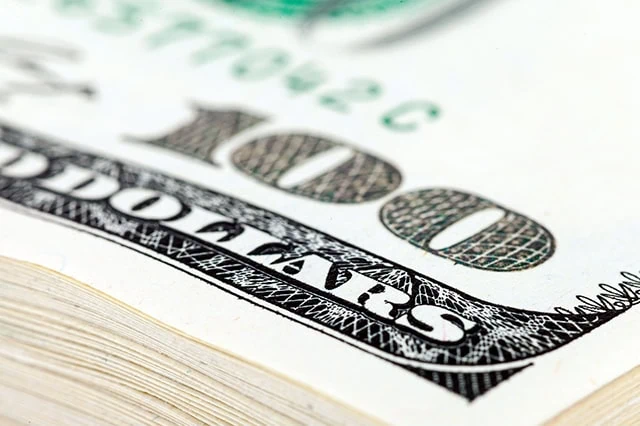
- Style: Large-cap dividend stock
- Management: Active
- Assets under management: $8.7 billion
- Dividend yield: 1.7%
- Expense ratio: 0.53%, or $5.30 per year for every $1,000 invested
Fidelity Equity-Income (FEQIX) is never going to win any popularity contests. This is a boring, dividend income-focused, large-cap value fund—one that will typically lag a little when the market is screaming higher.
But if you find yourself in peril, you’ll love having it in your corner.
FEQIX invests in roughly 125 large-cap stocks, predominantly U.S.-based blue chips like JPMorgan Chase (JPM) and Exxon Mobil (XOM) that pay out better-than-average dividends. You do get a little international exposure (a little less than 15% currently), but with the same focus on big, dividend-paying firms such as AstraZeneca (AZN) and Dividend Aristocrat Linde (LIN). Technically, manager Ramona Persaud is allowed to invest in debt securities and even trade covered calls to manage the fund’s assets, but right now, the fund’s assets are virtually all in equities, with a little less than 2% in cash.
This kind of portfolio construction lends itself to less upside in bull markets but better protection during bear markets and other downturns. It outperformed the market slightly during the COVID crash and late 2018 downturn, and by a much wider margin during the 2022 bear market and through 2025’s spring turbulence.
“Persaud constantly goes deep in her analysis. She’s trained as an engineer, driving a clear interest in structure, stability, and logic. She strives to wield multiple perspectives and drives for constant improvement,” Morningstar Senior Analyst Todd Trubey says. “Persaud’s focus on downside protection stems from a desire to help shareholders traverse difficult periods successfully. Unlike many investors who stress quantitative rigor, she invokes the art of investing often and consistently demonstrates humility when the market shifts.”
Want to learn more about FEQIX? Check out the Fidelity provider site.
Related: 10 Best Vanguard ETFs to Buy and Hold
4. Fidelity Mid Cap Index Fund

- Style: U.S. mid-cap stock
- Management: Index
- Assets under management: $37.7 billion
- Dividend yield: 1.2%
- Expense ratio: 0.025%, or 25¢ per year for every $1,000 invested
Mid-cap stocks are a way to thread the needle between the relative size and stability of large-cap stocks and the high growth potential of small-cap stocks. Indeed, this ideal middle ground has earned mid-caps the nickname of “Goldilocks” stocks.
“In any given 1-year rolling period since 2003, small-, mid-, and large-cap stocks have outperformed 33%, 26%, and 41% of the time,” investment company Hennessy Funds said in a 2023 research note. “However, the longer mid-cap stocks are held, the more often they outperformed. In fact, 60% of the time, mid-caps outperformed small- and large-cap stocks over any 10-year rolling period in the past 20 years.”
Better still? During the 20-year period (through 9/30/23) that Hennessy studied, it found that while mid-caps delivered higher risk than large caps, they delivered better returns … and they generated both lower risk and higher returns than small caps.
Fidelity Mid Cap Index Fund (FSMDX) is an exceedingly cost-efficient way to tap this area of the market. FSMDX tracks the Russell MidCap Index, which is made up of the 800 smallest stocks in the Russell 1000 (which is itself an index of the U.S. market’s 1,000 largest stocks). As a result, you’re getting exposure to 800-plus mostly mid-cap stocks—the fund typically is 75% weighted in mids, with another 5%-10% in smaller large caps, and another 10%-15% in larger small caps.
That might sound odd. But it’s actually common for 20%-30% of a mid-cap fund’s holdings to bleed into small- and/or large-company territory, and some funds invest even more outside of mid-caps. Where FSMDX stands out is that it “tends to go higher up the market-cap ladder than other mid-cap indexes, favoring large-cap stocks that tend to be more established than mid-cap stocks,” Morningstar says.
Sector weights will naturally change over time as certain businesses come into and go out of favor, but right now, financials and industrials are tops at 17% each, followed by technology (14%) and consumer discretionary (10%). Also, thanks to both the market cap-weighting of the Russell MidCap Index and the high number of holdings, single-stock risk is minimal—the only stock it weights at more than 1% is Palantir Technologies (PLTR), which has rocketed to nearly $300 billion in value, and thus is likely to be pulled from the Russell MidCap Index, and thus FSMDX, when the index reconstitutes in June 2025. (In fact, Palantir has already been pulled from other mid-cap indexes.)
A sound methodology for Wall Street’s mid-sized companies, dirt-cheap fee, and strong historical performance all make FSMDX one of the best Fidelity funds you can buy.
Want to learn more about FSMDX? Check out the Fidelity provider site.
Related: The Best Fidelity ETFs to Buy
5. Fidelity Select Medical Tech and Devices Fund

- Style: Sector (Health)
- Management: Active
- Assets under management: $4.5 billion
- Dividend yield: N/A
- Expense ratio: 0.63%, or $6.30 per year for every $1,000 invested
Fidelity has roughly 30 “Select” funds—the company’s name for its sector- and industry-specific funds. Several of these funds currently boast Morningstar Gold Medalist ratings and thus deserve a spot among the best Fidelity funds you can buy; I’ll cover a pair of them in this article.
First up is the Fidelity Select Medical Tech and Devices Fund (FSMEX).
FSMEX is a health care sector fund, and an oddball at that. While most health care sector funds will be highest on pharmaceuticals and biotechnology stocks, manager Eddie Lee Yoon’s 60-holding portfolio, which is 97% invested in domestic firms, is mostly dedicated to health care equipment (55% of assets) and life sciences tools and services (21%). The remaining portfolio is peppered with small holdings in health care technology, health care services, biotech, pharma, and other health care industries.
Fidelity Select Medical Tech and Devices does have something in common with your average health care fund, though: single-stock concentration. Many sector funds are cap-weighted and, as a result, often have a few allocations in the high single digits and even double digits. While FSMEX is hand-selected and not cap-weighted, Yoon holds a few outsized positions—most notably Boston Scientific (BSX, 13%), Danaher (DHR, 11%), and Intuitive Surgical (8%).
And while FSMEX is certainly more expensive than your typical sector index fund, it has largely been worth it.
Morningstar, in explaining its Gold rating, states that at FSMEX, “Edward Yoon has delivered superior performance, outperforming both the category benchmark and average category peer for the past 10-year period.” Morningstar adds that a personal investment of between $500,000 and $1 million in FSMEX is a positive contributor to the rating: “This effort demonstrates action toward aligning interests with shareholders by investing alongside them.”
Want to learn more about FSMEX? Check out the Fidelity provider site.
6. Fidelity Select Semiconductors Portfolio

- Style: Industry (Semiconductors)
- Management: Active
- Assets under management: $16.1 billion
- Dividend yield: <0.1%
- Expense ratio: 0.62%, or $6.20 per year for every $1,000 invested
While many investors unload their sector-specific needs to basic index exchange-traded funds (ETFs), Fidelity manager Adam Benjamin makes a case for human stewardship with his Fidelity Select Semiconductors Portfolio (FSELX).
The long-term appeal of chips is pretty straightforward: As both our personal and business worlds become increasingly dependent on technology, semiconductor companies—which design and manufacture one of the most essential components of technology—stand to benefit. And some of the greatest opportunities rest within those semiconductor companies powering emergent and high-growth technologies such as data centers, cloud computing, and artificial intelligence.
Benjamin, who has led the fund for five years, aims to beat the broader semiconductor industry by picking winners and losers within the space. In addition to single-company research, Benjamin also attempts to identify themes that will impact the largest end markets, and determine how technology disruptors might impact incumbent companies.
FSELX’s 55-stock portfolio might seem tight, but it’s pretty standard for a single-industry fund. The same goes for the massive 26% weight in Nvidia—as it goes, so too goes most semiconductor portfolios, not just Benjamin’s pick list.
Kudos to Fidelity Select Semiconductors: In addition to its Gold Medalist rating, it has beaten every meaningful benchmark—the S&P 500, the technology sector, the MSCI US IMI Information Technology 25/50 Index—and been within the top 2% of tech-stock funds over the trailing three-, five-, 10-, and 15-year periods.
Want to learn more about FSELX? Check out the Fidelity provider site.
Related: 7 Best High-Quality, High-Yield Dividend Stocks to Buy
7. Fidelity Total International Index Fund

- Style: International all-cap stock
- Management: Index
- Assets under management: $14.8 billion
- Dividend yield: 2.6%
- Expense ratio: 0.06%, or 60¢ per year for every $1,000 invested
If you’re looking for a little exposure to stocks outside of the U.S. … good! You should! Yes, U.S. markets have long been among the most productive in the world, and if you believe in the American economy’s ability to keep growing, that should remain the case—and thus, most experts would tell you to own primarily U.S. stock and bond funds.
But those same experts would tell you that it’s worth having at least some international exposure. And you can do that mighty inexpensively through the Fidelity Total International Index Fund (FTIHX).
FTIHX tracks an international index that holds large-, mid-, and small-cap stocks in both developed and emerging markets—basically anywhere that isn’t the U.S. And its passport is covered in stamps. The fund holds more than 5,000 stocks across a few dozen countries.
Like with most index funds, Fidelity Total International Index Fund hardly does any of this equally. Geographically speaking, this Fidelity mutual fund favors developed markets, including Japan (15%), the U.K. (9%), and Canada (7%). From a company-size perspective, it’s predominantly large-cap in nature—nearly 80% of the portfolio is invested in big, blue-chip international firms such as Taiwan Semiconductor (TSM) and German software company SAP (SAP). That’s common for international funds, and it tends to result in dividend yields that are much bigger than U.S. large-cap funds—FTIHX’s yield is roughly double the S&P 500’s.
It is worth noting that while Fidelity Total International Index Fund does enjoy a Morningstar Gold medalist rating, a lot of that is shouldered by its dirt-cheap investment fee. FTIHX’s historical performance has been generally good, but not necessarily excellent.
Are you compelled to build the lowest-fee portfolio possible? Do you have a Fidelity account (or are you willing to open one)? If so, you can own a similar, Silver-rated fund—Fidelity ZERO International Index Fund (FZILX)—for an annual fee of literally nothing.
Want to learn more about FTIHX? Check out the Fidelity provider site.
Related: 7 Best Fidelity Index Funds for Beginners
Featured Financial Products
8. Fidelity Pacific Basin

- Style: Pacific/Asia stock
- Management: Active
- Assets under management: $702.2 million
- Dividend yield: 5.7%
- Expense ratio: 0.87%, or $8.70 per year for every $1,000 invested
Much like investors augment their core equity holdings with, say, large growth stocks or small-cap companies to generate outperformance, they also try to jazz up their core international holdings with region-specific funds, like our next Gold-rated entry.
The Fidelity Pacific Basin Fund (FPBFX) is an actively managed mutual fund that invests in stocks either located in, or tied economically to, the Pacific Basin. It’s still one of the most expensive Fidelity funds we talk about, but its 0.87% expense ratio, which was recently lowered, puts its cost well below the 1.10% Morningstar Category average fee for diversified Asian/Japanese funds.
And these fees fuel a solid product. Co-Managers Kirk Neureiter and Stephen Lieu target companies with strong, stable growth characteristics, solid free cash flow, and focused management teams, among other traits.
Fidelity Pacific Basin is a mix of developed and emerging markets, with established Japan hoovering up the largest chunk of assets (37%), followed by China (23%) and Taiwan (11%). All told, you’re getting exposure to more than a dozen countries, including a small peppering of U.S. exposure. (Remember: Holdings can merely be “tied economically” to the Pacific Basin’s fortunes.)
While not market cap-weighted, the 100-stock portfolio predominantly consists of large-cap stocks (75%), though it does hold some mid-caps (15%) and small firms (10%). Top holdings are also large-firm-heavy; management has placed the greatest number of its chips behind names including Taiwan Semiconductor, Chinese e-commerce firm Tencent (TCEHY), and Japan gaming giant Nintendo (NTDOY).
FPBFX has been wildly successful over the long term. There aren’t many funds in its category, but Pacific Basin has been tops among its peers over the trailing one, three, five, 10, and 15 years, beating both the category average and index handily during those periods.
Want to learn more about FPBFX? Check out the Fidelity provider site.
Related: Best Fidelity Retirement Funds for a 401(k) Plan
9. Fidelity Investment Grade Bond Fund

- Style: Intermediate-term core bond
- Management: Active
- Assets under management: $10.4 billion
- SEC yield: 4.5%*
- Expense ratio: 0.44%, or $4.40 per year for every $1,000 invested
Most investors need some exposure to bonds, which is debt that’s issued by governments, companies, and other entities. Their interest payments and relative lack of volatility make them an excellent tool for providing a portfolio with stability and income. But how much bond exposure you need will vary by age—because they’re better at protecting wealth than growing it, people typically start with little in the way of bond holdings earlier in life, then gradually hold more bonds as they get closer to (and into) retirement. (Purpose-built investment products called target-date funds capture this dynamic automatically for investors.)
But individual bonds can be a hassle. Data and research on individual issues is much thinner than it is for publicly traded stocks. And some bonds have minimum investments in the tens of thousands of dollars. But you can blunt these problems by purchasing a bond fund, which allows you to invest in hundreds or even thousands of bonds with a single click—and, in many cases, very low fees.
Core bond funds like the Fidelity Investment Grade Bond Fund (FBNDX) are the, ahem, gold standard.
FBNDX’s five co-managers have built a portfolio of more than 4,600 investment-grade securities spanning numerous debt types. The fund’s largest current allocation is to U.S. Treasury bonds, which command 43% of assets. It also holds a 26% weight in corporate bonds, 16% in pass-through mortgage-backed securities (MBSes), 10% in asset-backed securities (ABSes), 7% in commercial MBSes, and sprinklings of other debt.
Diversification goes beyond debt categories, too. The fund holds bonds with maturities of between just a few months and more than 20 years, though the biggest slug (~60%) is in intermediate-term bonds of five to 10 years until maturity. Duration, a measure of interest-rate sensitivity, is 6.2 years. While the actual calculation is much more complex, this basically implies that for every 1-percentage-point increase in interest rates, FBNDX would suffer a short-term decline of 6.2%, and vice versa. It’s a moderate amount of risk, but no more.
From a performance standpoint, Fidelity Investment Grade Bond’s management has been up to the task, beating both its category average and index over every meaningful time period. It is particularly productive over the long-term, sitting in the top 10% of funds over the trailing 10- and 15-year periods.
Long story short: Fund shareholders are instantly plugged into a widely diversified and well-selected set of fixed-income assets, and at a very reasonable cost. This makes FBNDX one of the best Fidelity mutual funds to buy for anyone who wants to buy a single core bond product and call it a day.
* SEC yield reflects the interest earned across the most recent 30-day period. This is a standard measure for funds holding bonds and preferred stocks.
Want to learn more about FBNDX? Check out the Fidelity provider site.
Related: 13 Best Long-Term Stocks to Buy and Hold Forever
10. Fidelity Total Bond Fund
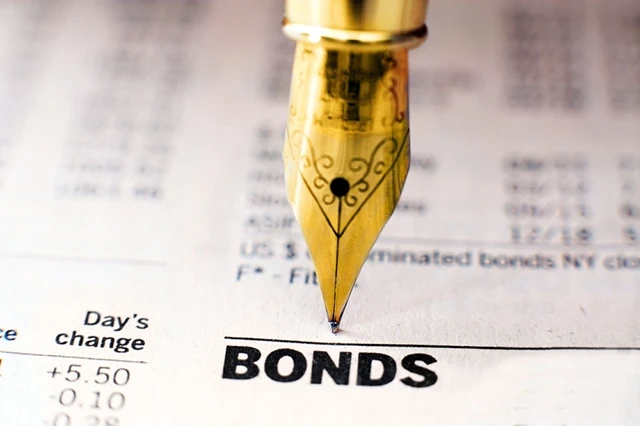
- Style: Intermediate-term core-plus bond
- Management: Active
- Assets under management: $39.0 billion
- SEC yield: 5.0%
- Expense ratio: 0.44%, or $4.40 per year for every $1,000 invested
Fidelity’s FBNDX is referred to as a “core” bond fund, which means it holds several types of core debt categories, such as U.S. Treasuries and investment-grade corporate bonds. Investors with a little more appetite for risk might also consider a “core-plus” bond fund, which also holds a variety of debt securities—but in addition to core bond categories, they can also hold noncore categories such as below-investment-grade (junk) corporate bonds and emerging-market debt.
One such core-plus fund is the Fidelity Total Bond Fund (FTBFX). A team of eight co-managers spreads the fund’s assets across more than 6,900 issues in a number of categories. Currently, it invests roughly a third of assets each into U.S. government and U.S. corporate bonds, and another 20% or so in pass-through mortgage-backed securities (MBSes). The rest is sprinkled across ABSes, commercial MBSes, foreign sovereign debt, and more.
Sure, the portfolio isn’t a huge diversion from a core bond fund. But this isn’t a fully investment-grade portfolio like FBNDX—you’re getting some exposure to high-yield corporate debt (12%) and emerging-market bonds (3%), too.
Credit quality is still high overall. And while management holds bonds with maturities ranging anywhere from 20 years to a few months, the biggest chunk of bonds (24%) sits between four and eight years. Duration, meanwhile, is just a hair over six years.
Performance-wise, Fidelity Total Bond has been in the top quarter (at least!) of its category peers over every medium- and long-term time frame. And you get that exposure at a below-average 0.44% in annual fees.
Want to learn more about FTBFX? Check out the Fidelity provider site.
Related: 9 Best Dividend Stocks for Beginners
11. Fidelity Freedom Index Funds

- Style: Target-date
- Management: Index
- Assets under management (collectively): $162.0 billion
- Expense ratio: 0.12%-0.13%, or $1.20-$1.30 per year for every $1,000 invested
Target-date funds are the ultimate buy-and-hold instrument, meant to stay in your portfolio for literally decades.
You can read more about this type of product in our primer on target-date funds, but in short, they’re funds that shift their asset allocation over time to meet investors’ changing needs as they age. A person who’s, say, 25 in 2025 would expect to retire in 2065, so they’d buy a fund with a target retirement date of 2065. That fund will probably start out with a very heavy allocation to stocks (to grow the investors’ wealth), but as the years roll on and the fund approaches its target retirement date, it will start putting more of its assets into bonds (to protect the investors’ wealth).
Many fund providers have at least one target-date series, though larger asset managers sometimes offer more. Fidelity is well outside the norm, however, with a whopping four—and the highest-rated among them are the Fidelity Freedom Index Funds.
Fidelity Freedom Index Funds, which are built exclusively from Fidelity’s lineup of low-cost index funds, are a rarity—few target-date series can boast a Gold Medalist rating. That rating is due in no small part to extremely low costs. Unlike actively managed target-date funds whose management fees tend to be different across the series, most Fidelity Freedom Index Funds charge the same fee (0.12%), with the 2065 fund the lone exception at 0.13%.
Here’s a quick look at the full lineup:
- Fidelity Freedom Index 2010 Fund (FKIFX)
- Fidelity Freedom Index 2015 Fund (FLIFX)
- Fidelity Freedom Index 2020 Fund (FPIFX)
- Fidelity Freedom Index 2025 Fund (FQIFX)
- Fidelity Freedom Index 2030 Fund (FXIFX)
- Fidelity Freedom Index 2035 Fund (FIHFX)
- Fidelity Freedom Index 2040 Fund (FBIFX)
- Fidelity Freedom Index 2045 Fund (FIOFX)
- Fidelity Freedom Index 2050 Fund (FIPFX)
- Fidelity Freedom Index 2055 Fund (FDEWX)
- Fidelity Freedom Index 2060 Fund (FDKLX)
- Fidelity Freedom Index 2065 Fund (FFIJX)
- Fidelity Freedom Index 2070 Fund (FRBVX)
- Fidelity Freedom Index Income Fund (FIKFX)
That last product, Fidelity Freedom Index Income Fund, is designed for people who have reached retirement, and it boasts the most conservative asset blend. When a Fidelity Freedom Index target-date fund expires, it merges with Fidelity Freedom Index Income.
Interestingly, Fidelity’s target-date lineups include two Gold Medalist honorees. The other is the Fidelity Flex Freedom Blend Fund series, which holds a blend of index and actively managed Fidelity funds. However, the “Flex” designation refers to a share class you can only buy with certain Fidelity accounts; the Fidelity Freedom Index Funds mentioned here are open to everyone.
Want to learn more about Fidelity Freedom Funds? Check out the Fidelity provider site.
Related: The Best Target-Date Funds
Featured Financial Products
Learn More About These and Other Funds With Morningstar Investor
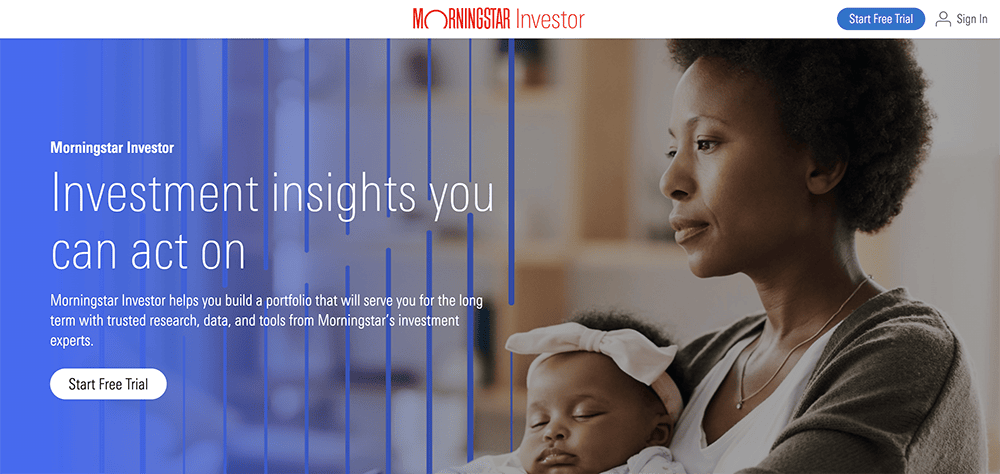
If you’re buying a fund you plan on holding for years (if not forever), you want to know you’re making the right selection. And Morningstar Investor can help you do that.
Morningstar Investor provides a wealth of information and comparable data points about mutual funds and ETFs—fees, risk, portfolio composition, performance, distributions, and more. Morningstar experts also provide detailed explanations and analysis of many of the funds the site covers.
With Morningstar Investor, you’ll enjoy a wealth of features, including Morningstar Portfolio X-Ray®, stock and fund watchlists, news and commentary, screeners, and more. And you can try it before you buy it. Right now, Morningstar Investor is offering a free seven-day trial. You can check out the current deal, as well as discounted rates for students and teachers, on Morningstar Investor’s website.
- Morningstar Investor offers expert research, investing analysis, and advisor-grade portfolio management tools that are tailor-made for buy-and-hold investors.
- Morningstar is one of the most prized sources of mutual fund and exchange-traded fund (ETF) data in the world.
- How does your portfolio stack up? Put it through Morningstar's Portfolio X-Ray, which will provide insights such as whether you have too many overlapping holdings or whether you're paying too much in fees.
- Special Offer 1: Click our sign-up link to receive $50 off your first year of Morningstar Investor. (Annual plan only.)
- Special Offer 2: Students receive one year of Morningstar Investor access for just $25!
- Special Offer 3: Teachers receive a 60% discount on Morningstar Investor access.
- Top-flight fund research and analysis
- Portfolio management tool
- Powerful screener
- Watchlists
- Tailored news and commentary
- Below-average charting
- High monthly billing rate
Fidelity’s Best Mutual Funds: Frequently Asked Questions (FAQs)

What is the minimum investment amount on Fidelity mutual funds?
Fidelity’s mutual funds (and ETFs, for that matter) make plenty of sense for investors of all shapes and sizes, but they have a particular appeal among people who don’t have much money to work with. That’s because many Fidelity mutual funds have no investment minimums—you can literally start with as little as $1.
That’s extremely beneficial in self-directed accounts like a brokerage or health savings account (HSA). Many mutual funds from other providers require high minimums in the thousands of dollars, hamstringing investors with little capital to work with.
Why does a fund’s expense ratio matter so much?
Every dollar you pay in expenses is a dollar that comes directly out of your returns. So, it is absolutely in your best interests to keep your expense ratios to an absolute minimum.
The expense ratio is the percentage of your investment lost each year to management fees, trading expenses and other fund expenses. Because index funds are passively managed and don’t have large staffs of portfolio managers and analysts to pay, they tend to have some of the lowest expense ratios of all mutual funds.
This matters because every dollar not lost to expenses is a dollar that is available to grow and compound. And over an investing lifetime, even a half a percent can have a huge impact. If you invest just $1,000 in a fund generating 5% per year after fees, over a 30-year horizon, it will grow to $4,116. However, if you invested $1,000 in the same fund, but it had an additional 50 basis points in fees (so it only generated 4.5% per year in returns), it would grow to only $3,584 over the same period.
Want to talk more about your financial goals or concerns? Our services include comprehensive financial planning, investment management, estate planning, taxes, and more! Schedule a call with Riley to discuss what you need, and what we can do for you.




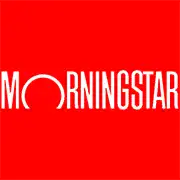



![The 9 Best ETFs for Beginners [2025] 40 a hand taking a slice of a pie chart.](https://youngandtheinvested.com/wp-content/uploads/pie-chart-index-fund-etf-wooden-table-1200-600x403.webp)
